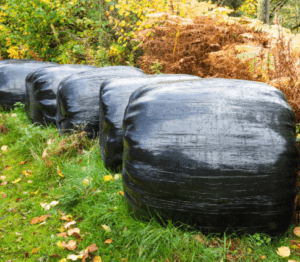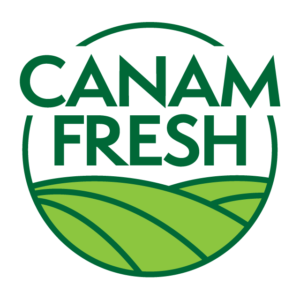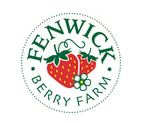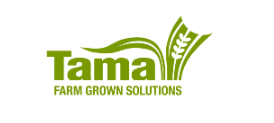Are you looking to optimize your livestock feed production with baled silage? If so, you’ve come to the right place! In this article, we will delve into the world of baled silage production, covering everything from the fermentation process to proper sealing techniques.
What Is Baled Silage?
Baled silage is forage that is baled at a higher moisture than forage to be stored as dry hay. By wrapping cut forage in plastic to create a sealed environment, the crops undergo fermentation, which preserves the nutrients and makes it more digestible for animals. This process allows farmers to efficiently store and feed high-quality forage throughout the year.
The Fermentation Process
The production of silage depends upon microbial fermentation. During the fermentation process of baled silage, lactic acid bacteria naturally present on the forage begin to multiply and produce lactic acid. This acid lowers the pH level of the silage, creating a hostile environment for spoilage organisms. As a result, the forage is preserved and maintains its nutritional value for extended periods.
Moisture – The Critical Factor
Proper moisture content is crucial in baled silage production. The ideal moisture range for baled silage is between 40% and 60%, with a targeted average of 50 per cent. Most farmers prefer forage to be on the drier side, as the bales are lighter and easier to handle. However, the drier the forage, the more difficult it is to produce a firm, dense bale without air pockets. Excess air in the bale will result in minimal fermentation and increased risk of mould. A moisture level within this range promotes anaerobic fermentation, inhibiting the growth of harmful bacteria and ensuring the preservation of nutrients in the forage.
Moisture for good quality silage should come from the plant – and not from dew or rain. Forage that has been dried for hay, and then received rain before it has been baled, will produce poor quality silage.
Advantages of Baled Silage
Baled silage offers several advantages over other methods of forage preservation. Some of the key benefits include:
- High nutrient retention
- Convenient storage and feeding
- Reduced risk of spoilage
- Improved palatability for animals
- Flexibility in feeding schedules
- Permits harvest at optimum stage for high-quality forage.
- Provides flexibility in amount harvested so that small amounts can be handled.
- Allows for a producer-controlled cutting schedule – first cut at the optimum time and subsequent cuts when quality is highest.
- Leaf loss in the field is only 5 to 10 per cent as compared to 25 to 30 per cent for dry hay.
 Proper Sealing
Proper Sealing
To ensure successful baled silage production, proper sealing of the bales is essential. The plastic wrap used to enclose the forage must be free of holes or tears to maintain an airtight environment. Additionally, tightly compacting the forage before wrapping helps to eliminate air pockets and promote anaerobic fermentation. Mould will develop if air gets into the system during this phase through tears in the plastic, or because of loose bales.
Once respiration has stopped and no air is present, the anaerobic phase begins. Lactic acid bacteria present in the forage ferment the carbohydrates, resulting in lactic acid production. Acetic acid and propionic acid are also produced. These acids are important in inhibiting mould.
The supply of carbohydrates will affect fermentation. For example, crops such as corn or grass, which have high levels of carbohydrates, will ferment easily. Alfalfa, on the other hand, has a lower carbohydrate level and takes longer to ferment. However, a late-fall harvest (second or third cut) of alfalfa will usually contain higher amounts of carbohydrates and will provide more active fermentation.
Fermentation Tips
When producing baled silage, there are a few tips to keep in mind to optimize the fermentation process:
- Monitor moisture levels closely to ensure optimal fermentation.
- Use a high-quality plastic wrap to prevent air exposure.
- Allow bales to ferment for at least three weeks before feeding to livestock.
- Store bales in a cool, dry place to maintain quality.
- Ensure bales are dense and well sealed to reduce the amount of oxygen in the system. This will encourage good fermentation and prevent mould.
- If possible, avoid raking the swath to prevent contamination by soil organisms.
- Avoid using hay that has been rained on. It has a greater potential to be contaminated by soil organisms, and poorer fermentation potential because of reduced sugar content.
- Use a lactobacillus bacteria inoculant to improve fermentation, particularly in alfalfa. Agriculture and Agri-Food Canada research has shown this type of inoculant can improve livestock intake by five per cent, and daily weight gain by 11.6 per cent.
- To prevent mould growth in lower-moisture forage (moisture levels 25 to 35 per cent at harvest), apply buffered propionic acid or anhydrous ammonia at amounts of one to two per cent of the dry matter.
In conclusion, baled silage production is a valuable technique for storing and preserving forage crops for livestock feed. By understanding the fermentation process, moisture requirements, and proper sealing techniques, farmers can produce high-quality silage that meets the nutritional needs of their animals. Incorporating baled silage into your feed production practices can result in improved feed efficiency, reduced waste, and overall better animal health.
























